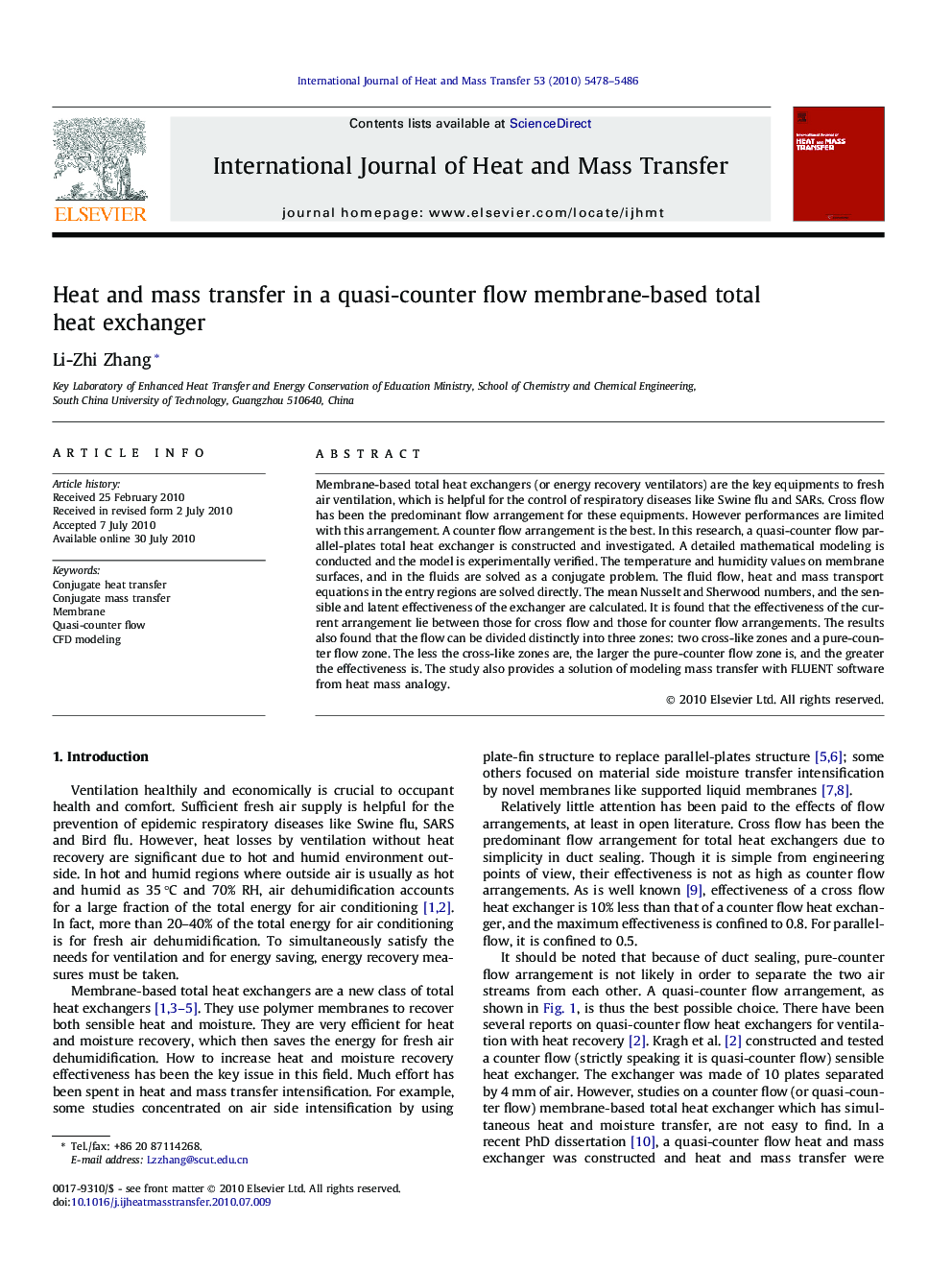| Article ID | Journal | Published Year | Pages | File Type |
|---|---|---|---|---|
| 659610 | International Journal of Heat and Mass Transfer | 2010 | 9 Pages |
Abstract
Membrane-based total heat exchangers (or energy recovery ventilators) are the key equipments to fresh air ventilation, which is helpful for the control of respiratory diseases like Swine flu and SARs. Cross flow has been the predominant flow arrangement for these equipments. However performances are limited with this arrangement. A counter flow arrangement is the best. In this research, a quasi-counter flow parallel-plates total heat exchanger is constructed and investigated. A detailed mathematical modeling is conducted and the model is experimentally verified. The temperature and humidity values on membrane surfaces, and in the fluids are solved as a conjugate problem. The fluid flow, heat and mass transport equations in the entry regions are solved directly. The mean Nusselt and Sherwood numbers, and the sensible and latent effectiveness of the exchanger are calculated. It is found that the effectiveness of the current arrangement lie between those for cross flow and those for counter flow arrangements. The results also found that the flow can be divided distinctly into three zones: two cross-like zones and a pure-counter flow zone. The less the cross-like zones are, the larger the pure-counter flow zone is, and the greater the effectiveness is. The study also provides a solution of modeling mass transfer with FLUENT software from heat mass analogy.
Related Topics
Physical Sciences and Engineering
Chemical Engineering
Fluid Flow and Transfer Processes
Authors
Li-Zhi Zhang,
